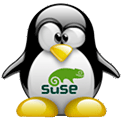NAME
GNU Parted - a partition manipulation program
SYNOPSIS
parted [options] [device [command [options...]...]]
DESCRIPTION
parted is a disk partitioning and partition resizing program. It allows you to
create, destroy, resize, move and copy ext2, linux-swap, FAT, FAT32, and reiserfs
partitions. It can create, resize, and move Macintosh HFS partitions, as well as detect jfs,
ntfs, ufs, and xfs partitions. It is useful for creating space for new operating systems,
reorganising disk usage, and copying data to new hard disks.
This manual page documents parted briefly. Complete documentation is
distributed with the package in GNU Info format; see near the bottom.
OPTIONS
|
-h, --help |
| | displays a help message
|
|
-l, --list |
| | lists partition layout on all block devices
|
|
-m, --machine |
| | displays machine parseable output
|
|
-s, --script |
| | never prompts for user intervention
|
|
-v, --version |
| | displays the version
|
|
COMMANDS
|
[device] |
| | The block device to be used. When none is given, parted will use the
first block device it finds.
|
|
[command [options]] |
| | Specifies the command to be executed. If no command is given,
parted will present a command prompt. Possible commands are:
|
|
|
check partition |
| | Do a simple check on partition.
|
|
cp [source-device] source dest |
| | Copy the source partition’s filesystem on source-device (or the
current device if no other device was specified) to the dest partition
on the current device.
|
|
help [command] |
| | Print general help, or help on command if specified.
|
|
mkfs partition fs-type |
| | Make a filesystem fs-type on partition. fs-type can be one
of "fat16", "fat32", "ext2", "linux-swap", or "reiserfs".
|
|
mklabel label-type |
| | Create a new disklabel (partition table) of label-type.
label-type should be one of "bsd", "dvh", "gpt", "loop", "mac", "msdos",
"pc98", or "sun".
|
|
mkpart part-type [fs-type] start end |
| | Make a part-type partition with filesystem fs-type (if specified),
beginning at start and ending at end (by default in megabytes).
fs-type can be one of
"fat16", "fat32", "ext2", "HFS", "linux-swap", "NTFS", "reiserfs", or "ufs".
part-type should be one of "primary", "logical", or "extended".
|
|
mkpartfs part-type fs-type start end |
| | Make a part-type partition with filesystem fs-type beginning at
start and ending at end (by default in megabytes). Using
this command is discouraged. Instead use
mkpart to create an empty partition, and then use external tools like
mke2fs(8)
to create the filesystem.
|
|
move partition start end |
| | Move partition so that it begins at start and ends at end.
Note: move never changes the minor number.
|
|
name partition name |
| | Set the name of partition to name. This option works only on Mac,
PC98, and GPT disklabels. The name can be placed in quotes, if necessary.
|
|
print | Display the partition table.
|
|
quit | Exit from parted.
|
|
rescue start end |
| | Rescue a lost partition that was located somewhere between start and
end. If a partition is found, parted will ask if you want to
create an entry for it in the partition table.
|
|
resize partition start end |
| | Resize the filesystem on partition so that it begins at start and
ends at end (by default in megabytes).
|
|
rm partition |
| | Delete partition.
|
|
select device |
| | Choose device as the current device to edit. device should usually
be a Linux hard disk device, but it can be a partition, software raid device,
or an LVM logical volume if necessary.
|
|
set partition flag state |
| | Change the state of the flag on partition to state.
Supported flags are: "boot", "root", "swap", "hidden", "raid", "lvm", "lba",
and "palo".
state should be either "on" or "off".
|
|
unit unit |
| | Set unit as the unit to use when displaying locations and sizes,
and for interpreting those given by the user when not suffixed with an
explicit unit. unit can be one of "s" (sectors), "B" (bytes), "kB",
"MB", "GB", "TB", "%" (percentage of device size), "cyl" (cylinders),
"chs" (cylinders, heads, sectors), or "compact" (megabytes for input,
and a human-friendly form for output).
|
|
version |
| | Display version information and a copyright message.
|
|
|
|
KNOWN ISSUES
ext3 filesystem functionality does not currently work. To manage ext3
type filesystems use tools like
resize2fs(8)
or
mke2fs(8).
Note that the currently supported ext2 filesystem will be deprecated
once ext3 support is finalized. Further note that ext3 support will
have limited functionality that is yet to be defined. Use tools like
resize2fs(8)
and
mke2fs(8)
to manage these types of filesystems.
To manually resize an ext3 filesystem and/or a partition use
resize2fs(8),
fdisk(8)
or similar tools. For LVM situations, you will need to use the LVM commands
to resize the LVM elements.
REPORTING BUGS
Report bugs to <bug-parted@gnu.org>
SEE ALSO
fdisk(8),
mkfs(8),
The parted program is fully documented in the
info(1)
format
GNU partitioning software manual.
AUTHOR
This manual page was written by Timshel Knoll <timshel@debian.org>,
for the Debian GNU/Linux system (but may be used by others).
